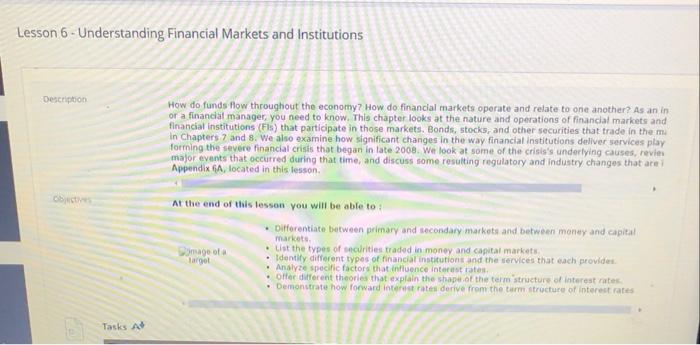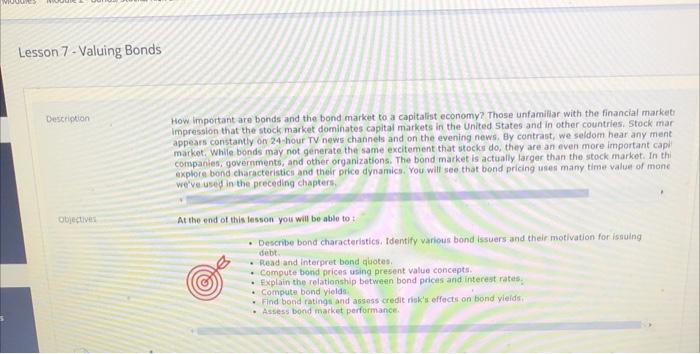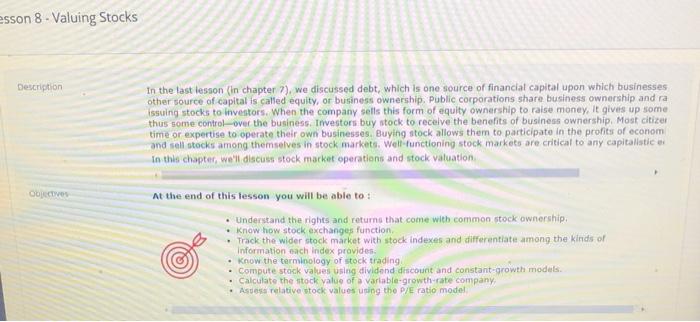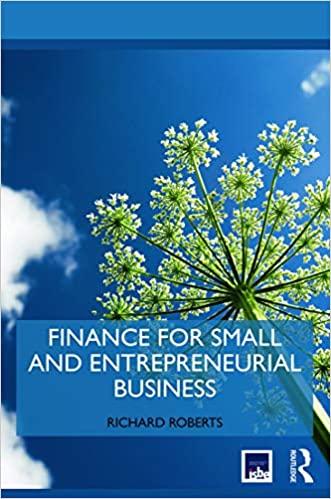Module Two (2) Reflection Write a reflection about what you have learned in this module. Your reflections should include (1) your opinion, (2) personal experience, and (3) evidence to back up your thoughts and/or opinion (APA citation). The purpose of this assignment is to ensure you are processing your thoughts on the course content. This will enhance your learning and knowledge. Your posts in the discussion area should exhibit careful thought and logical reasoning and provide evidence for your position. Each post should be at least one well-developed paragraph (approximately 4-6 sentences or more, unless otherwise indicated). Use correct spelling, punctuation, and grammar You are also required to read and reply to other students, as indicated in each discussion assignment. Your replies should offer new substantiated ideas or thoughtful questions. I encourage friendly debate and disagreement but ask that it be courteous and respectful. Do not be afraid to speak your mind, but remember that yours is only one opinion. Need help with Blackboard? Review the Blackboard Student Guide Discussion Lesson 6 - Understanding Financial Markets and Institutions Description How do funds flow throughout the economy? How do financial markets operate and relate to one another? As an in or a financial manager, you need to know. This chapter looks at the nature and operations of financial markets and financial institutions (FIS) that participate in those markets. Bonds, stocks, and other securities that trade in the me in Chapters 7 and 8. We also examine how significant changes in the way financial institutions deliver services play forming the severe financial crisis that began in late 2008. We look at some of the crisis's underlying causes, revie major events that occurred during that time, and discuss some resulting regulatory and Industry changes that are Appendix 1A, located in this lesson Obte At the end of this lesson you will be able to Differentiate between primary and secondary markets and between money and capital markets magot Ulst the types of securities traded in money and capital markets Targot Identity different types of financial institutions and the services that each provides Analyze specific factors that influence Interest rates Offer different theories that explain the shape of the term structure of interest rates Demonstrate how forward interest rates derive from the term structure of interest rates Tasks At Module 2- Bonds, Stocks, Risk & Return. At This module provides an overview of how financial markets operate and relate to each other. You will also exami different forms of risks, and how to estimate the risks and return for the future. Chapter 6, 7, 8, 9 & 10. Lesson 7 - Valuing Bonds Description How important are bonds and the bond market to a capitalist economy? Those unfamiliar with the financial market impression that the stock market dominates capital markets in the United States and in other countries. Stock mar appears constantly on 24-hour TV news channels and on the evening news. By contrast, we seldom hear any ment market. While bonds may not generate the same excitement that stocks do, they are an even more important capi companies, governments, and other organizations. The bond market is actually larger than the stock market. In thi explore bond characteristics and their price dynamics. You will see that bond pricing uses many time value of mone we've used in the preceding chapters Objective At the end of this tension you will be able to Describe bond characteristics. Identify various bond issuers and their motivation for issuing debt Read and interpret bond quotes Compute bond prices using present value concepts Explain the relationship between bond prices and interest rates compute bond yields Find bond ratings and assess credit risk's effects on bond yields Assess bond market performance esson 8. Valuing Stocks Description In the last lesson (in chapter 7), we discussed debt, which is one source of financial capital upon which businesses other source of capital is called equity, or business ownership Public corporations share business ownership andra issuing stocks to investors. When the company sells this form of equity ownership to raise money, It gives up some thus some control over the business Investors buy stock to receive the benefits of business ownership. Most citizer time or expertise to operate their own businesses. Buying stock allows them to participate in the profits of econom and sell stocks among themselves in stock markets. Well functioning stock markets are critical to any capitalistic In this chapter, we'll discuss stock market operations and stock valuation Octs At the end of this lesson you will be able to : Understand the rights and returns that come with common stock ownership Know how stock exchanges function Track the wider stock market with stock indexes and differentiate among the kinds of Information cach Index provides Know the terminology of stock trading Compute stock values using dividend discount and constant-growth models Calculate the stock value of a variable-growth-rate company Ases relative stock values using the P/E ratio model You can invest your money very safely by opening a savings account at a bank or by buying Treasury bills. So why would you invest your money in risky stocks and bonds if you can take advantage of low-risk opportunities. The answer: Very low-risk investments also provide a very low return. Investors take on higher risk investments in expectation of earning higher returns. In this chapter, you'll see how the risk-return relationship fundamentally affects finance theory. We focus on using historical information to characterize past returns and risks. We show how you can diversify to eliminate some risk and expect the highest return possible for your desired risk level. In Chapter 10, we'll turn to estimating the risks and returns you should expect in the future. At the end of this lesson you will be able to : Compute an investment's dollar and percentage return . Find information about the historical returns and volatility for the stock, bond, and cash markets, Measure and evaluate the total risk of an investment using several methods Recognize the risk-return relationship and its implications Plan investments that take advantage of dive fication and its impact on total risk. Find efficient and optimal portfolios. Compute a portfolio's return Lesson 10 - Estimating Risk and Return Description tion Is it possible for investors to know the exact risk they have to take in Chapters 9 and 10, we explore methods to find the return that individual or institutional Investors require to make a particular investment attractive. In the previous chapter, we established a positive relationship between risk and return using historical data. Risk and return play an undeniable role as investors seek the best return for the least risk But until there's some way to forecast the future, financial managers and investors must make investment decisions armed only with their expectations about future risk and return. We need an exact specification that directly shows the amount of award required for investors to take the level of risk in a given firm's stock or portfolio of securitie In this chapter, we will also see how investors get the information they need to make award decisions aton At the end of this son you will be able to ent Compute forward-looking expected return and riik Understand is pro know and apply the capital asset pricing model (CAN) Calculate and apply be sure of market is Differentiate among the different lavalt of market widency and their implications Calculate and explain Investor required return and it Use the constant growth model to comprador retum Mes Advies Bard Tasks AS Module Two (2) Reflection Write a reflection about what you have learned in this module. Your reflections should include (1) your opinion, (2) personal experience, and (3) evidence to back up your thoughts and/or opinion (APA citation). The purpose of this assignment is to ensure you are processing your thoughts on the course content. This will enhance your learning and knowledge. Your posts in the discussion area should exhibit careful thought and logical reasoning and provide evidence for your position. Each post should be at least one well-developed paragraph (approximately 4-6 sentences or more, unless otherwise indicated). Use correct spelling, punctuation, and grammar You are also required to read and reply to other students, as indicated in each discussion assignment. Your replies should offer new substantiated ideas or thoughtful questions. I encourage friendly debate and disagreement but ask that it be courteous and respectful. Do not be afraid to speak your mind, but remember that yours is only one opinion. Need help with Blackboard? Review the Blackboard Student Guide Discussion Lesson 6 - Understanding Financial Markets and Institutions Description How do funds flow throughout the economy? How do financial markets operate and relate to one another? As an in or a financial manager, you need to know. This chapter looks at the nature and operations of financial markets and financial institutions (FIS) that participate in those markets. Bonds, stocks, and other securities that trade in the me in Chapters 7 and 8. We also examine how significant changes in the way financial institutions deliver services play forming the severe financial crisis that began in late 2008. We look at some of the crisis's underlying causes, revie major events that occurred during that time, and discuss some resulting regulatory and Industry changes that are Appendix 1A, located in this lesson Obte At the end of this lesson you will be able to Differentiate between primary and secondary markets and between money and capital markets magot Ulst the types of securities traded in money and capital markets Targot Identity different types of financial institutions and the services that each provides Analyze specific factors that influence Interest rates Offer different theories that explain the shape of the term structure of interest rates Demonstrate how forward interest rates derive from the term structure of interest rates Tasks At Module 2- Bonds, Stocks, Risk & Return. At This module provides an overview of how financial markets operate and relate to each other. You will also exami different forms of risks, and how to estimate the risks and return for the future. Chapter 6, 7, 8, 9 & 10. Lesson 7 - Valuing Bonds Description How important are bonds and the bond market to a capitalist economy? Those unfamiliar with the financial market impression that the stock market dominates capital markets in the United States and in other countries. Stock mar appears constantly on 24-hour TV news channels and on the evening news. By contrast, we seldom hear any ment market. While bonds may not generate the same excitement that stocks do, they are an even more important capi companies, governments, and other organizations. The bond market is actually larger than the stock market. In thi explore bond characteristics and their price dynamics. You will see that bond pricing uses many time value of mone we've used in the preceding chapters Objective At the end of this tension you will be able to Describe bond characteristics. Identify various bond issuers and their motivation for issuing debt Read and interpret bond quotes Compute bond prices using present value concepts Explain the relationship between bond prices and interest rates compute bond yields Find bond ratings and assess credit risk's effects on bond yields Assess bond market performance esson 8. Valuing Stocks Description In the last lesson (in chapter 7), we discussed debt, which is one source of financial capital upon which businesses other source of capital is called equity, or business ownership Public corporations share business ownership andra issuing stocks to investors. When the company sells this form of equity ownership to raise money, It gives up some thus some control over the business Investors buy stock to receive the benefits of business ownership. Most citizer time or expertise to operate their own businesses. Buying stock allows them to participate in the profits of econom and sell stocks among themselves in stock markets. Well functioning stock markets are critical to any capitalistic In this chapter, we'll discuss stock market operations and stock valuation Octs At the end of this lesson you will be able to : Understand the rights and returns that come with common stock ownership Know how stock exchanges function Track the wider stock market with stock indexes and differentiate among the kinds of Information cach Index provides Know the terminology of stock trading Compute stock values using dividend discount and constant-growth models Calculate the stock value of a variable-growth-rate company Ases relative stock values using the P/E ratio model You can invest your money very safely by opening a savings account at a bank or by buying Treasury bills. So why would you invest your money in risky stocks and bonds if you can take advantage of low-risk opportunities. The answer: Very low-risk investments also provide a very low return. Investors take on higher risk investments in expectation of earning higher returns. In this chapter, you'll see how the risk-return relationship fundamentally affects finance theory. We focus on using historical information to characterize past returns and risks. We show how you can diversify to eliminate some risk and expect the highest return possible for your desired risk level. In Chapter 10, we'll turn to estimating the risks and returns you should expect in the future. At the end of this lesson you will be able to : Compute an investment's dollar and percentage return . Find information about the historical returns and volatility for the stock, bond, and cash markets, Measure and evaluate the total risk of an investment using several methods Recognize the risk-return relationship and its implications Plan investments that take advantage of dive fication and its impact on total risk. Find efficient and optimal portfolios. Compute a portfolio's return Lesson 10 - Estimating Risk and Return Description tion Is it possible for investors to know the exact risk they have to take in Chapters 9 and 10, we explore methods to find the return that individual or institutional Investors require to make a particular investment attractive. In the previous chapter, we established a positive relationship between risk and return using historical data. Risk and return play an undeniable role as investors seek the best return for the least risk But until there's some way to forecast the future, financial managers and investors must make investment decisions armed only with their expectations about future risk and return. We need an exact specification that directly shows the amount of award required for investors to take the level of risk in a given firm's stock or portfolio of securitie In this chapter, we will also see how investors get the information they need to make award decisions aton At the end of this son you will be able to ent Compute forward-looking expected return and riik Understand is pro know and apply the capital asset pricing model (CAN) Calculate and apply be sure of market is Differentiate among the different lavalt of market widency and their implications Calculate and explain Investor required return and it Use the constant growth model to comprador retum Mes Advies Bard Tasks AS













